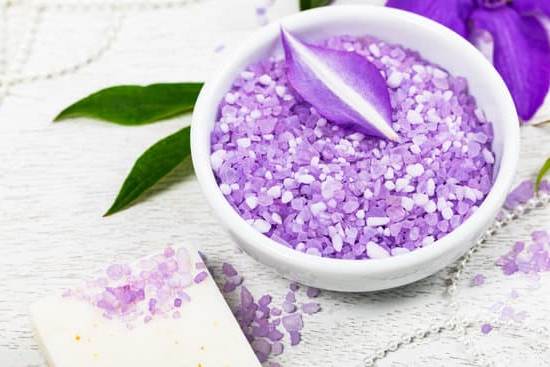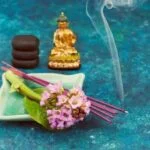Can you store aromatherapy oils in heat? Properly storing aromatherapy oils is essential for maintaining their quality and effectiveness. The impact of heat on these oils can be detrimental, affecting their chemical composition and therapeutic benefits. In this article, we will explore the significance of appropriately storing aromatherapy oils and the potential consequences of exposing them to heat.
Aromatherapy oils, also known as essential oils, are derived from various plants and possess unique properties that offer a range of health benefits. From lavender to peppermint, each oil has distinct characteristics that make it valuable for different uses. However, the quality and potency of these oils can be compromised if they are not stored correctly, particularly when exposed to heat.
Heat can significantly alter the chemical composition of aromatherapy oils, thereby diminishing their therapeutic effects. It is important to understand how temperature fluctuations can impact the shelf life and overall quality of these oils. By gaining insight into the effects of heat on aromatherapy oils, individuals can take proactive measures to ensure that their oils remain potent and beneficial for their intended purposes.
Understanding Aromatherapy Oils
Aromatherapy oils, also known as essential oils, are highly concentrated plant extracts that are used for their therapeutic properties. They are derived from various parts of plants, including flowers, leaves, bark, and roots, through processes such as distillation or cold pressing. Each type of aromatherapy oil has its own unique chemical composition and aroma, resulting in a wide range of therapeutic benefits.
There are numerous types of aromatherapy oils available, each with its own distinct properties and uses. For example, lavender oil is commonly used for its calming and soothing effects, while peppermint oil is often used to alleviate symptoms of nausea and headaches.
Tea tree oil is well-known for its powerful antibacterial and antifungal properties, making it a popular choice for skincare and treating minor cuts and insect bites. With so many options to choose from, it’s important to understand the specific properties of each aromatherapy oil before incorporating them into your wellness routine.
When it comes to using aromatherapy oils in massage therapy or diffusers at home or work spaces there are numerous factors that should be taken into account. Removing the heat source when storing essential oils such as lavender can be paramount towards maintaining their quality over time since extreme temperatures can actually damage the precious phytochemicals present within them thus reducing their potent attributes drastically.
Additionally one other crucial vigor aspect lies on the willful control towards selecting only sources directly sold by certified distributors with high standards following all established normatives towards providing you solely with high-pureness quality substances ensuring maximum adaptation to any aplicationcircustances where an entropy conditionsic mighturface.
| Aromatherapy Oil | Unique Properties |
|---|---|
| Lavender | Calming and Soothing effects |
| Peppermint | Alleviates symptoms of nausea and headaches |
| Tea Tree | Antibacterial and antifungal properties |
Effects of Heat on Aromatherapy Oils
Aromatherapy oils are highly concentrated plant extracts that contain volatile compounds responsible for their therapeutic properties. These oils are often used in diffusers, topically on the skin, or inhaled to promote relaxation, alleviate stress, and improve overall well-being. However, the quality and potency of aromatherapy oils can be significantly affected by improper storage, particularly when exposed to heat.
Here are some potential effects of heat on aromatherapy oils:
- Altered Chemical Composition: When exposed to high temperatures, the chemical composition of aromatherapy oils can be altered. This can lead to a loss of therapeutic benefits and a decrease in their effectiveness for aromatherapy purposes.
- Oxidation: Heat can cause oxidation in aromatherapy oils, leading to a shorter shelf life and a deterioration in their quality. Oxidized oils may also pose potential health risks when used on the skin or inhaled.
- Evaporation of Volatile Compounds: The volatile compounds that give aromatherapy oils their characteristic scent and therapeutic properties can evaporate when exposed to heat for prolonged periods. This can result in a weaker aroma and reduced effectiveness of the oil.
Given these potential effects, it’s important to store aromatherapy oils properly to maintain their potency and therapeutic benefits.
To prevent the negative impact of heat on aromatherapy oils, consider these best storage practices:
- Store them in cool, dark places away from direct sunlight or sources of heat.
- Use dark-colored glass containers with tight-fitting lids to protect the oils from light and air exposure.
- Consider refrigeration for certain types of aromatherapy oils that are especially sensitive to heat.
By taking these precautions, you can ensure that your aromatherapy oils retain their quality and efficacy for an extended period.
Best Storage Practices
Properly storing aromatherapy oils is crucial for maintaining their potency and shelf life. Heat can have a significant impact on the quality of these oils, so it is essential to store them in a way that minimizes exposure to high temperatures. Here are some tips on how to store aromatherapy oils effectively:
- Keep them in a cool, dark place: Store your aromatherapy oils in a cool, dark area away from direct sunlight and heat sources. This can help prevent the oils from degrading and losing their therapeutic properties.
- Use dark glass bottles: Aromatherapy oils should be stored in dark glass bottles to protect them from light exposure. Amber or cobalt blue bottles are ideal for this purpose.
- Avoid extreme temperature fluctuations: Fluctuations in temperature can cause the essential oils to deteriorate more quickly. It’s best to store them in a location with a consistent, moderate temperature.
By following these storage practices, you can help prolong the shelf life and maintain the quality of your aromatherapy oils.
It is also important to note that proper storage not only preserves the effectiveness of the oils but also ensures safety. Essential oils are highly concentrated plant extracts and improper storage could lead to degradation or even potential hazards if they are not stored correctly.
Common Mistakes
When it comes to storing aromatherapy oils, there are several common mistakes that people often make, especially when it comes to warm environments. Understanding these mistakes can help individuals preserve the quality and potency of their essential oils for longer periods of time.
Exposing Oils to Direct Sunlight
One of the most common mistakes that individuals make when storing aromatherapy oils in warm environments is exposing them to direct sunlight. Heat from the sun can cause essential oils to deteriorate more quickly, leading to a loss of their therapeutic properties. It is important to store essential oils in a cool, dark place away from direct sunlight to ensure their longevity.
Storing Oils Near Heat Sources
Another mistake that people often make is storing their aromatherapy oils near heat sources such as radiators or stoves. Direct exposure to heat can cause essential oils to evaporate more quickly and can also alter their chemical composition. It is crucial to keep essential oils away from any heat sources and maintain a consistent temperature in their storage space.
Using Improper Containers
Many individuals also make the mistake of using improper containers for storing their aromatherapy oils in warm environments. Plastic containers, for example, can leach chemicals into the oils when exposed to heat, affecting their quality. It is best to use dark glass containers such as amber or cobalt bottles, which can help protect the oils from light and heat damage.
Avoiding these common mistakes will ensure that your aromatherapy oils remain potent and effective for longer periods of time, even when stored in warm environments. By taking simple precautions and being mindful of how you store your essential oils, you can maintain their quality and maximize their therapeutic benefits.
Alternatives to Heat
When it comes to storing aromatherapy oils, it’s essential to consider the impact of heat on their quality. Exposing these oils to high temperatures can lead to a decline in their therapeutic benefits and chemical composition. Therefore, it’s crucial to explore alternative storage methods that can help preserve the potency and shelf life of aromatherapy oils.
Cool, Dark Spaces
One alternative storage method for aromatherapy oils is to keep them in cool, dark spaces. Storing these oils in a cool environment helps prevent them from being exposed to excessive heat, which could potentially alter their composition. Additionally, keeping the oils in dark spaces helps protect them from light exposure, which could also degrade their quality over time.
Refrigeration
Another effective way to store aromatherapy oils is by refrigeration. The cooler temperature of the refrigerator can help maintain the stability of the oils and prolong their shelf life. However, it’s important to note that some essential oils may solidify or thicken at cold temperatures, so it’s necessary to allow them to return to room temperature before use.
By utilizing these alternative storage methods, you can ensure that your aromatherapy oils are well-protected from heat and other factors that could compromise their quality. Whether you choose a cool, dark space or refrigeration, maintaining the proper storage conditions is key to preserving the therapeutic benefits of these valuable oils.
Choosing the Right Containers
When it comes to storing aromatherapy oils, choosing the right containers is crucial in preserving their quality and potency. The best types of containers for storing these oils are dark glass bottles made of amber or cobalt blue.
These types of glass help protect the oils from the damaging effects of light and heat, which can cause them to deteriorate more quickly. Additionally, glass containers are non-reactive, meaning they won’t interact with the oils and alter their chemical composition.
Another important factor to consider when choosing containers for aromatherapy oils is the cap or lid. It’s best to use caps made of tightly-sealing materials such as aluminum or plastic with a polycone insert, as this will prevent air and moisture from getting in and affecting the oil. It’s also essential to make sure that the cap fits securely onto the bottle to create an airtight seal.
It’s important to avoid using containers made of clear glass or plastic, as these materials do not offer adequate protection against light and heat. Clear glass allows light to penetrate and accelerate the oxidation process, while plastic containers can interact with the oils and potentially contaminate them. In addition to choosing the right type of container, it’s also important to store them in a cool, dark place away from direct sunlight and heat sources.
| Types of Containers | Benefits |
|---|---|
| Dark Glass Bottles (Amber or Cobalt Blue) | Protects oils from light and heat |
| Caps with Polycone Insert | Creates an airtight seal to prevent air and moisture from affecting oils |
Conclusion
In conclusion, the proper storage of aromatherapy oils is essential for maintaining their quality and therapeutic benefits. As discussed, heat can have a significant impact on the chemical composition and potency of these oils, potentially diminishing their effectiveness. Therefore, it is crucial to store aromatherapy oils in a way that minimizes their exposure to heat.
To ensure the longevity and efficacy of aromatherapy oils, it is important to store them in cool, dark spaces or even consider refrigeration, especially in warmer climates. Additionally, choosing the right containers, such as dark glass bottles with tight seals, can help protect the oils from light and heat damage.
It’s important to be mindful of common mistakes people make when storing aromatherapy oils in warm environments and to actively seek out alternative storage methods. By following best practices for storing aromatherapy oils, individuals can preserve their quality and maximize their therapeutic benefits for longer periods of time. Can you store aromatherapy oils in jeat? The answer is no – they are best stored in cool and dark locations to maintain their effectiveness.
Frequently Asked Questions
Can Essential Oils Be Left in the Heat?
Essential oils should not be left in the heat for prolonged periods as high temperatures can cause them to degrade and lose their potency. It’s best to store essential oils in a cool, dark place to maintain their quality.
Do Essential Oils Go Bad in Heat?
Yes, essential oils can go bad in heat if they are exposed to high temperatures for extended periods. Heat can cause the oils to oxidize, which can lead to a change in scent and also reduce their therapeutic properties.
What Temperature Is Too Hot for Essential Oils?
The temperature at which essential oils can start to deteriorate varies depending on the specific oil. In general, it’s recommended to store essential oils below 85°F (30°C) to prevent them from being damaged by excessive heat. It’s important to check the specific storage recommendations for each type of essential oil to ensure its longevity and effectiveness.

Are you looking for a natural way to improve your health and wellbeing?
If so, aromatherapy may be the answer for you.





